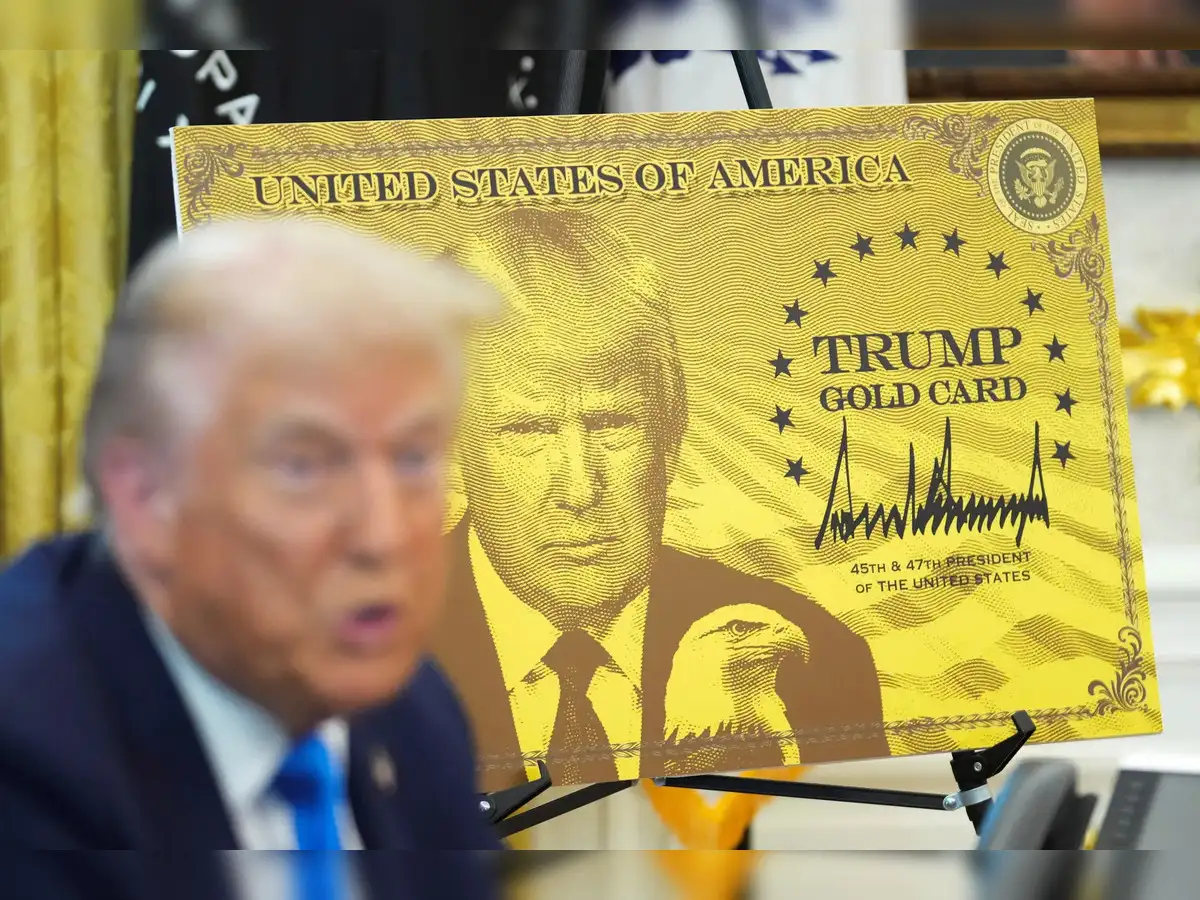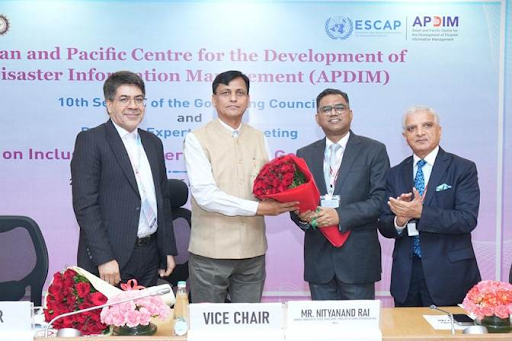Description
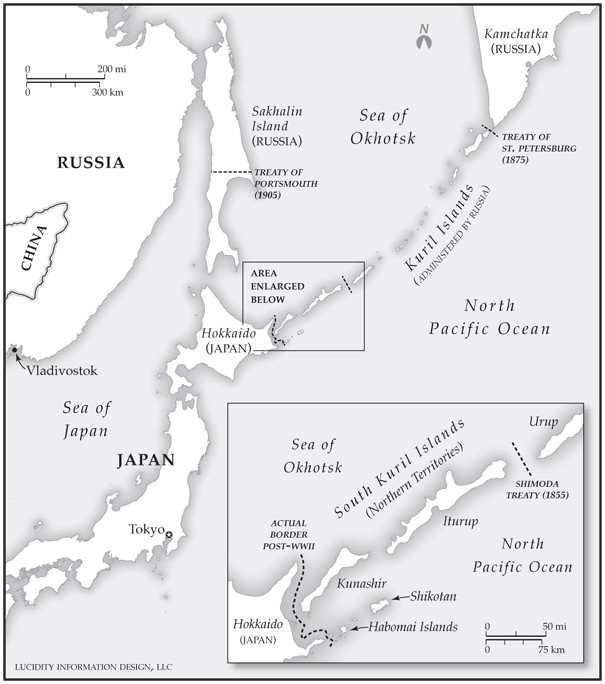
Disclaimer: Copyright infringement not intended.
Context
- As the invasion of Ukraine drags on, Russia is forced to funnel more and more of its military and economic resources to its western border.
- The war could give Japan a chance to take control of what the Japanese call the Northern Territories.
- The strategically located islands are known as the Kuril Islands in Russia.
Kuril Islands
About
- The Kuril Islands are a volcanic archipelago administered as part of Sakhalin Oblast in the Russian Far East.
Location
- The Kuril Islands are a chain of islands that stretch between the Japanese island of Hokkaido at their southern end and the Russian Kamchatka Peninsula at their northern end.
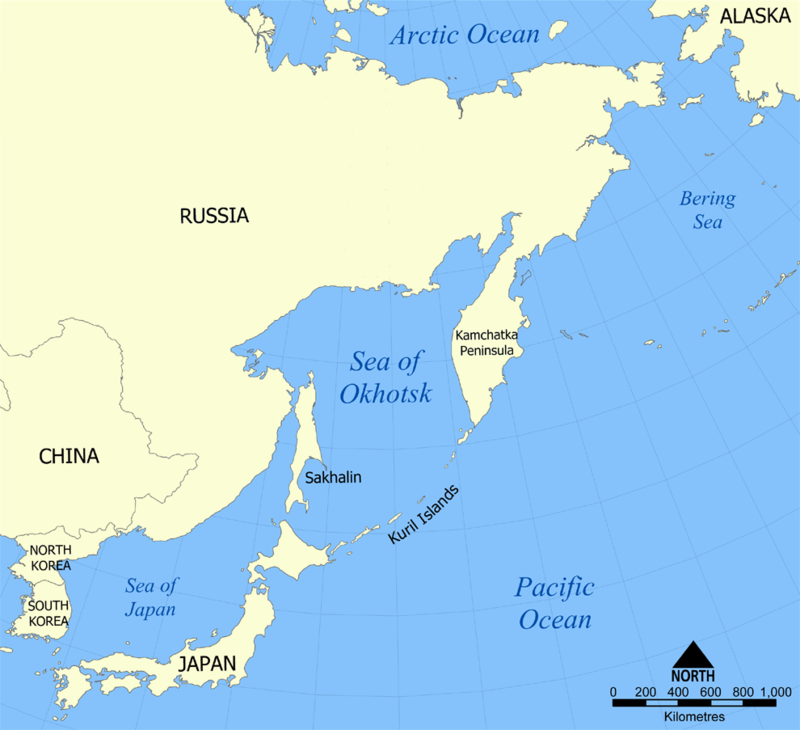
- The islands separate the Sea of Okhotsk from the Pacific Ocean.
Composition
- There are 56 islands and many minor islets.
- The Kuril Islands consist of the Greater Kuril Chain and, at the southwest end, the parallel Lesser Kuril Chain.
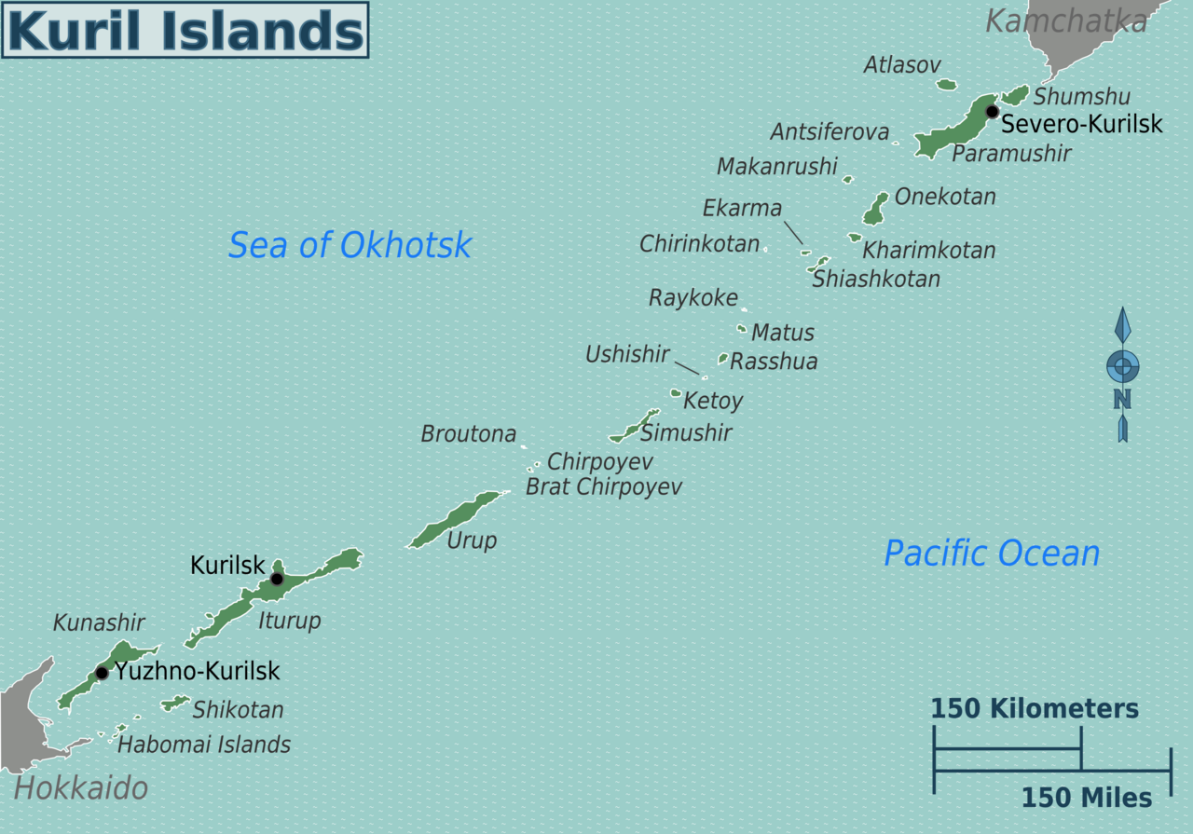
Formation
- The islands themselves are summits of stratovolcanoes that are a direct result of the subduction of the Pacific Plate under the Okhotsk Plate, which forms the Kuril Trench some 200 kilometers east of the islands.
Highest Elevation
- The highest elevations on the islands are Alaid volcano (highest point: 7,674 ft) on Atlasov Island at the northern end of the chain.
Climate
- The Köppen climate classification of most of the Kurils is subarctic (Dfc).
Vegetation
- Vegetative cover ranges from tundra in the north to dense spruce and larch forests on the larger southern islands.
Kuril Island Dispute
- The Kuril Islands dispute, known as the Northern Territories dispute in Japan, is a territorial dispute between Japan and Russia over the ownership of the four southernmost Kuril Islands.
- The four disputed islands, like other islands in the Kuril chain that are not in dispute, were unilaterally annexed by the Soviet Union following the Kuril Islands’ landing operation at the end of World War II.
- The disputed islands are under Russian administration as the South Kuril District and part of the Kuril District of the Sakhalin Oblast.
- They are claimed by Japan, which refers to them as its Northern Territories or Southern Chishima, and considers them part of the Nemuro Subprefecture of Hokkaido Prefecture.
Disputed Islands
The islands in dispute are:
- Iturup -Etorofu Island (Japan)
- Kunashir --Kunashiri Island (Japan)
- Shikotan --Shikotan Island (Japan)
- Habomai Islands --Habomai Island (Japan)
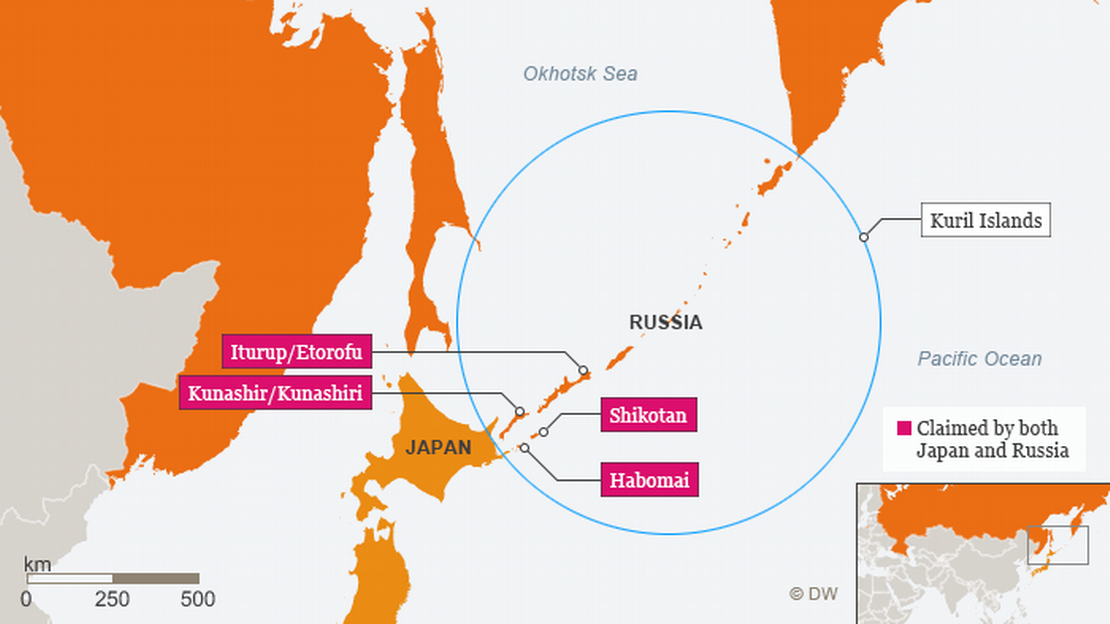
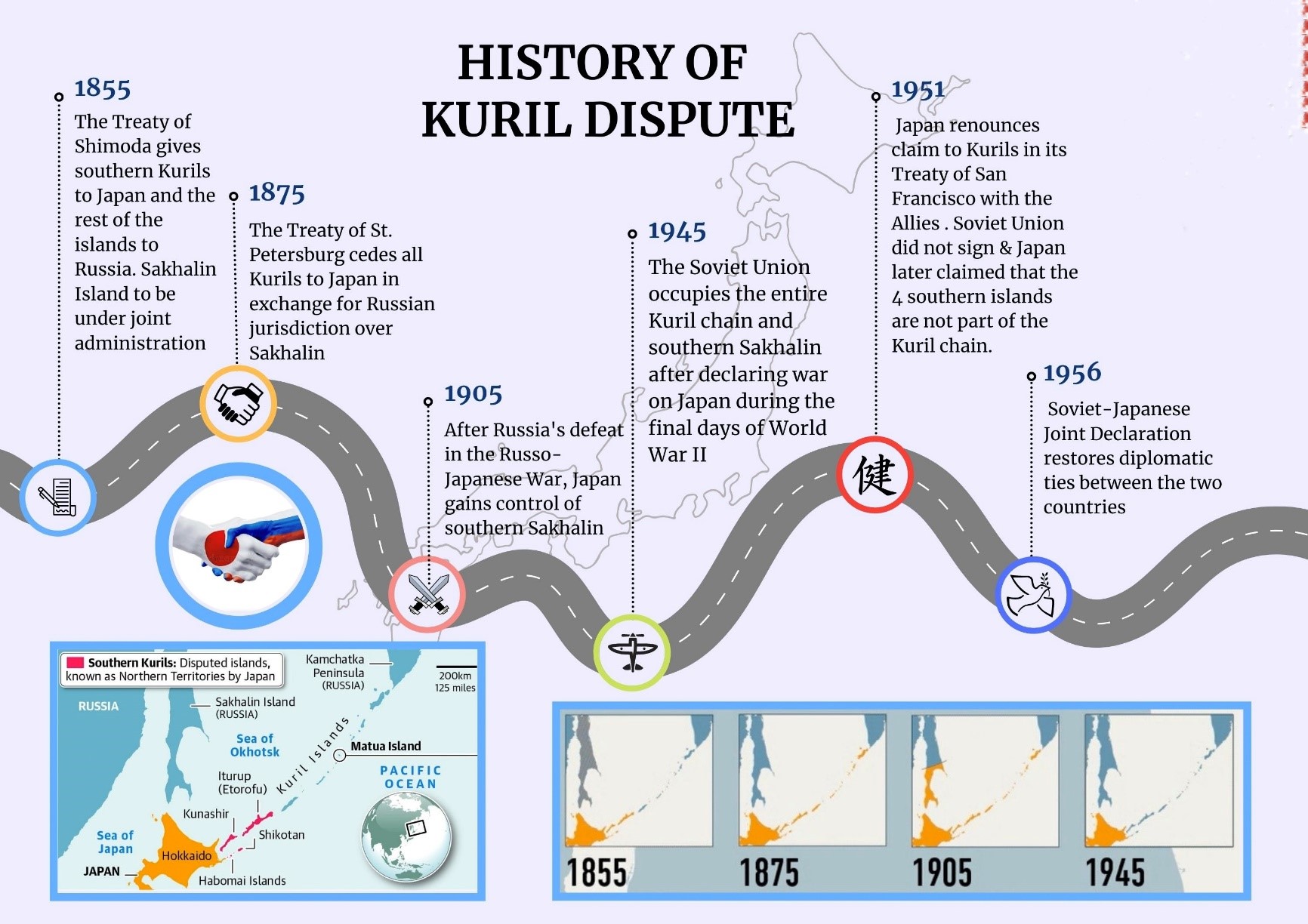
Brief History of Dispute
- The modern Kuril Islands dispute arose in the aftermath of World War II and resulted from the ambiguities and disagreements about the meaning of the Yalta Agreement (February 1945), the Potsdam Declaration (July 1945), and the Treaty of San Francisco (September 1951).
- The Kuril Islands were a territory of Japan until the fall of the Japanese Empire during the war.
- The Soviet Union captured the islands in line with the demand of Soviet leader Joseph Stalin at the Yalta Conference. The Japanese residents of the island were expelled to Japan by the USSR until 1949. According to the claims of Japan, the islands must be returned to Japan and the decision of the Yalta Conference giving the islands to the USSR are void for Japan, since Japan was not involved in the Yalta Conference.
- On the other hand, Russia argues that the islands should be legally returned to the USSR as a result of Japan's defeat in World War II. According to the Soviet-Japanese Joint Declaration of 1956, two of four islands, or 6% of the disputed area, were returned to Japan.
- However, the United States undermined the process and caused a deepening of the problem during the Cold War. After the collapse of the Soviet Union in 1991, the Kuril Islands problem came to the fore again in the Yeltsin era.
- The solution of Kuril Islands problem was laid down as a condition by Japan to sign a peace treaty which has not been signed since 1945. The Kuril Islands are perceived as a national honor for Japan.
- The San Francisco Peace Treaty, signed between the Allies and Japan in 1951, also does not recognize the Soviet Union's sovereignty over them.
- Japan and the Soviet Union ended their formal state of war with the Soviet–Japanese Joint Declaration of 1956 but did not sign a peace treaty.
- Japan claims that at least some of the disputed islands are not a part of the Kuril Islands, and thus are not covered by the treaty. Russia maintains that the Soviet Union's sovereignty over the islands was recognized in post-war agreements.
- During talks leading to the joint declaration, the Soviet Union offered Japan the two smaller islands of Shikotan and the Habomai Islands in exchange for Japan renouncing all claims to the two bigger islands of Iturup and Kunashir, but Japan declined the offer.
- This disagreement between the two-island offer made by the Soviet Union and Japan's demand of regaining two bigger islands as well became the cornerstone for the continuation of the dispute.
- With the annexation of Crimea by Russia in 2014, the West started to impose sanctions against Russia. Japan, as a part of the Western alliance, joined the sanctions against Russia. In retaliation to Japan's attitude, Russia conducted military drills around the Kuril Islands, increasing tension between Japan and Russia, causing the problem to become even more difficult to
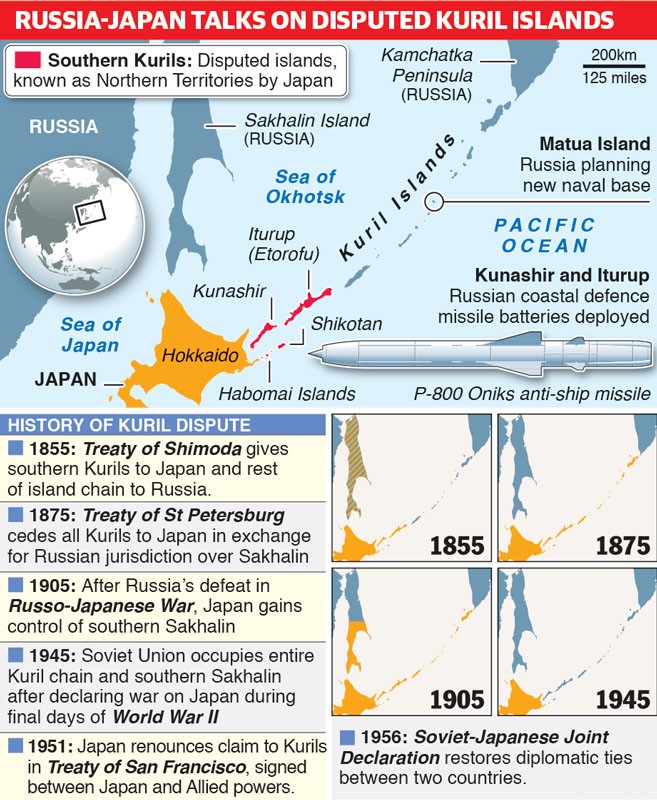
Why is it so difficult to find a solution?
- To date, nationalists in both countries have blocked the few attempts that have been made to find a compromise.
- Russia considers the "Southern Kurils" to be its rightful spoils following Japan's defeat in the Second World War. Japanese nationalists insist that Russia turn over complete control of the "Northern Territories."
- Meanwhile, tens of thousands of Russians now live there. Those residents have been receiving special economic assistance from the Russian government since 2007.
- Moreover, military installations have been built on the islands as well, most recently, a missile defense station.
- Russian Leadership will no doubt find it difficult to concede Russian territory. Japanese Leadership, on the other hand, must fear the wrath of Japan's ultra-nationalists should his country regain only the smaller islands.
Way Ahead
- The dispute over the South Kuril Islands continues to plague Russia-Japan relations.
- A new strategic approach to the issue will finally settle the border between the two Pacific neighbors and help Moscow and Tokyo enhance their standing in the changing Asia-Pacific region.
- Solving the dispute is in the interest of both countries—Russia will gain a valuable partner to build up its underdeveloped eastern provinces and Japan will gain a new ally that will improve its security in Asia.
|
KEY LESSONS
- The South Kuril Islands issue will not resolve itself or become increasingly irrelevant over time.
- Solving the dispute over the islands requires addressing economic, political, and strategic affairs. But the qualitative improvement of relations between Russia and Japan in these areas requires resolving the island problem.
- The only conceivable solution is a compromise between the official Japanese position of transferring all four islands to Japan and the offer made by Moscow in 1956 to hand over two islands equivalent to 7 percent of the territory.
- Leaders in both countries must have enough support to make the necessary compromises. Russia must give up more than many Russians think and Japan needs to receive less than most Japanese believe it ought to.
|
The Compromise Solution
- Russia should give up Shikotan and Habomai. These two islands cover only 7 percent of the territory claimed by Japan, and Moscow already agreed to hand them over under a joint declaration in 1956.
Economic Activity
- Japan should support economic activity in the islands and in Russia. Direct public sector investment and positive economic incentives for Japan’s private sector will foster economic growth in the islands and Russia’s Far East and Siberia.
Joint Economic Zone
- Russia and Japan should establish a Joint Economic Zone. Run by a Russian-Japanese authority administering a distinct economic and legal regime, a joint economic zone covering all four islands will help develop the area.
Political Agreement
- Russia and Japan must reach a political agreement. The entire area needs to be demilitarized, and Russia should initially continue to exercise sovereignty over the other two islands, Iturup and Kunashir.
- Eventually, all of the islands should be integrated into Japan. After fifty years, Iturup and Kunashir will transition to Japanese law and sovereignty.
- The joint economic regime will continue for another fifty years, and Russian permanent residents will be free to stay on the islands.
Closing Remarks
- In the end, the South Kuril Island issue can only be solved within the context of a fundamentally new strategic approach, with Moscow and Tokyo viewing the other party as a valuable resource for their own interests.
- To put this most succinctly, Russia needs partners to help unleash the economic capacity of its resource-rich but underdeveloped areas and to raise the living standards of its population. Seen from this angle, Japan is a major external resource for Russia’s development, particularly in Siberia and the Far East.
- Among Russia’s neighbors in Asia, Japan is the most advanced economy and it can be a source of capital investment and technology transfers. Conversely, Japan is a market for Russia’s traditional exports—oil, gas, coal, timber, and metals—and a valuable partner for a range of logistical projects.
- Politically, a fully normalized relationship with Japan would strengthen Russia’s position in Asia.
- In fact, Russia should strive for a relationship with Japan that is of the same kind and on the same scale as the one it has successfully built with Germany. The two horrific wars in the twentieth century notwithstanding, today’s Germany is Russia’s closest partner and perhaps its best friend among the bigger countries of the West.
- Gaining a similar partner in the east would produce clear benefits in all relevant areas: trade, investment, science and technology, education, healthcare, transportation, and human relations.
- In the same vein, Japan needs Russia to create a better balance for itself on the continent of Asia. Of all of Japan’s neighbors in Asia, Russia has the most natural resources, the greatest strategic depth, the most developed global mindset, and the most formidable weapons arsenal.
- Gaining access to Russian resources and, even more importantly, the Russian market when it further develops (as it eventually will) are useful.
- For this to be possible will require strong political will and sufficient political support for transformative strategies in both Russia and Japan.
- Success will hinge on the ability of the national leadership in both countries to break out of the surviving Cold War mindsets and receive the popular mandate for the transformation.
- There is a clear path forward for resolving the dispute over the South Kuril Islands and establishing deeper relations between Russia and Japan. This is in the national interests of both countries and efforts should be made by Russian and Japanese leaders immediately so the opportunity is not wasted.
Trivia
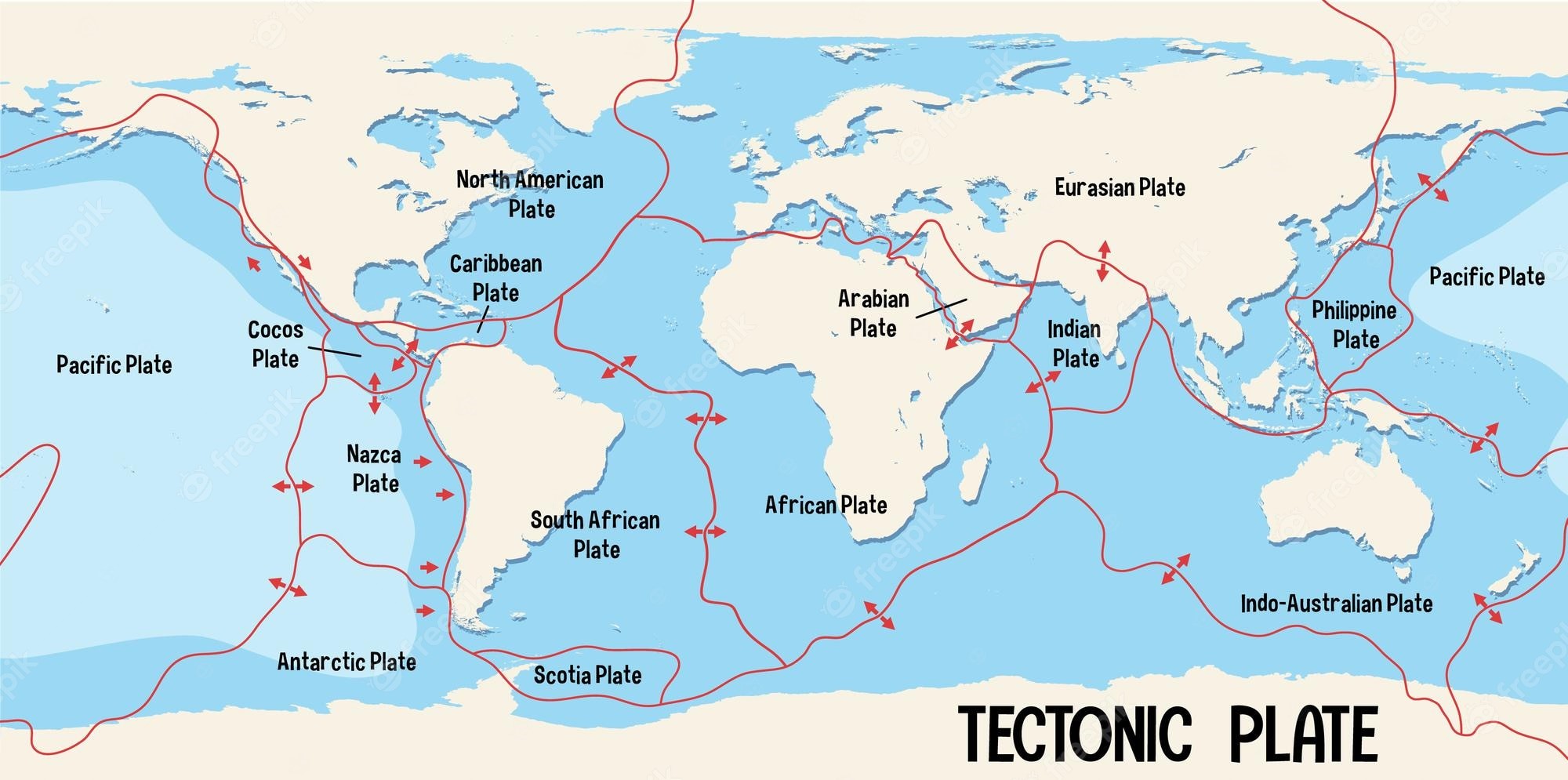
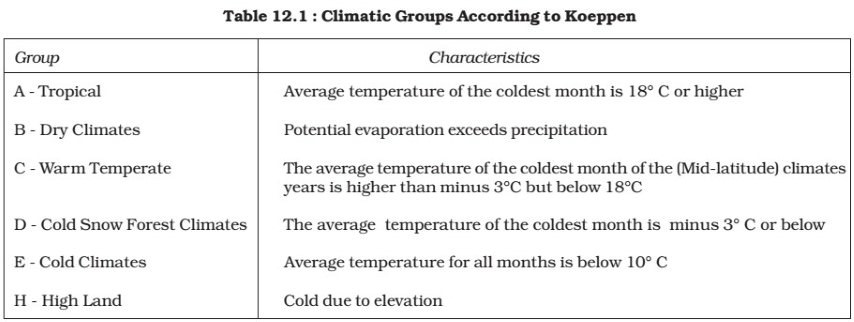
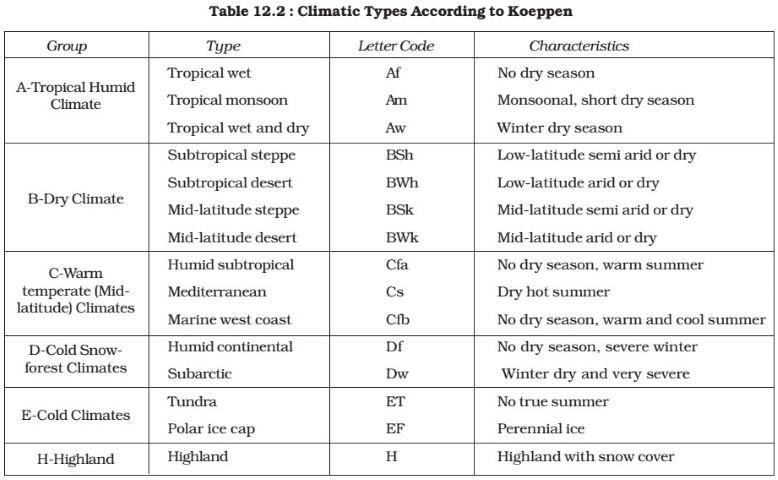
|
PRACTICE QUESTION
Q. The South Kuril Islands dispute is a telling symbol of a poor bilateral relationship and it can only be solved within the context of a fundamentally new strategic approach that can help the countries in dispute to enhance their standing in the changing Asia-Pacific region. Analyze.
PRACTICE QUESTION
Q. Consider the following statements with reference to the Kuril Islands or Northern Territories.
1. The islands separate the Sea of Okhotsk from the Pacific Ocean.
2. They are administered as part of the Sakhalin Oblast in the Russian Far East.
3. The San Francisco Peace Treaty recognizes the Soviet Union's sovereignty over them.
4. The islands are a direct result of the subduction of the Pacific Plate under the Scotia Plate.
Which of the above statements is/are correct?
(a) 1 and 2 only
(b) 2 and 3 only
(c) 3 and 4 only
(d) None of the above.
Correct Answer: (a) 1 and 2 only
|

https://indianexpress.com/article/explained/explained-global/could-china-take-kuril-islands-claimed-by-japan-and-russia-8869904/














